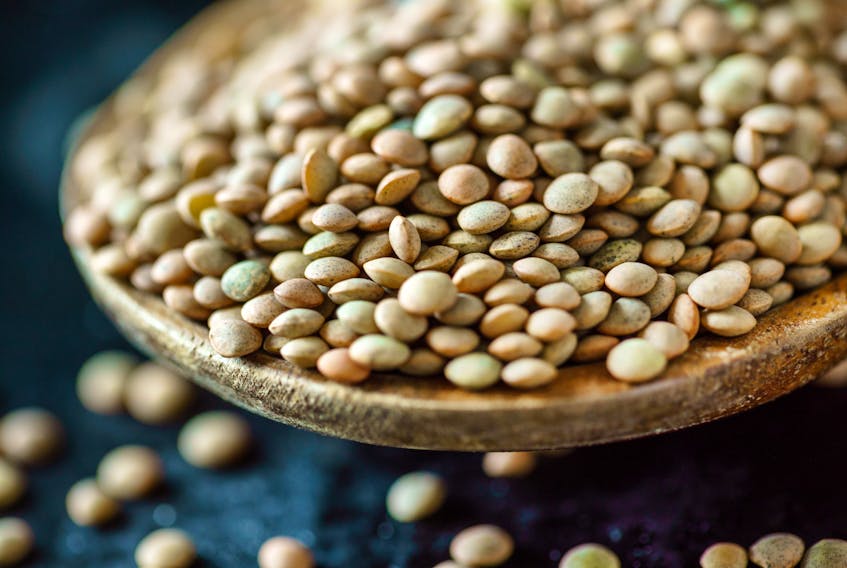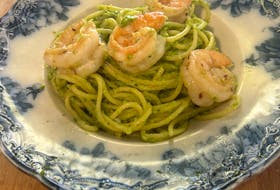Lentils, from the legume family, are like cousins to chickpeas, soybeans, beans, and peanuts. Packed full of nutrients, they are a very affordable addition to our diet.
Lori Moore, a holistic nutrition consultant and culinary expert based in Kingsport, N.S., says Canada is one the leading exporters of lentils in the world, followed by India. Saskatchewan produces almost all the lentils grown in Canada.
Lentils contain both soluble and insoluble fibre and are rich in prebiotics to support the growth of beneficial gut bacteria. Why's that important? Fibre acts like a broom, cleaning the intestinal tract and collecting and binding carcinogens for removal from the body, explains Moore.
One cup of cooked lentils provides more than 15 grams of fibre, says Moore, over half of the recommended daily requirement of 25 grams for women (for men, it's 38 grams). On top of that, fibre helps to manage blood sugar, lower high blood cholesterol, and prevent constipation.
Lentils are also a good source of plant-based protein and iron. One cup of cooked lentils provides more than one-third of the daily recommended intake of iron. They are also an excellent source of folate and are higher in antioxidants than other legumes and several fruits and vegetables, providing neuro-protective and anti-cancer activity, says Moore.
Some studies show that lentils help you feel fuller and may reduce the risk for obesity. Increased consumption of lentils is associated with a lower risk of developing of Type 2 diabetes.
How to use lentils?
When it comes to preparing and eating lentils, many people are at a loss about how to use them.
Storage is simple: dried lentils can be stored in an air-tight container for up to a year.
Preparation, says Moore, depends on the type of lentils, which are identified by colour.
- Brown lentils have a delicious earthy flavour. They cook in about 20 minutes.
- Green lentils have a peppery taste and take longer to cook, about 30 minutes or more.
- Red lentils cook and soften quickly, so are a great addition to pasta sauce, soups, stews, and anywhere that you’re trying to “hide” the lentils from fussy family members. They cook in 15 minutes (20 if you want them to be mushy).
- Yellow lentils have a sweet, nutty flavour and cook quickly like red lentils, in about 15 minutes. They are delicious in curried dishes.
- French lentils, also called puy lentils, are a good choice for recipes in which you want the lentils to retain their shape. They are considered the most nutritious of the lentils. They are also a great choice for salads. They require a longer cooking time, about 40 to 50 minutes.
All cooking times are for lentils that have not been soaked. Have time to soak them first? Cooking time will be reduced by one-third to half
If you’re in a pinch or pressed for time, Moore suggests using canned lentils instead. Look for lentils with no salt added and in BPA-free cans.
Easy substitutions
One little-known way to use lentils is to stretch meat further. Substitute one cup of uncooked, dried green or brown lentils for one pound of ground beef or ground turkey in soups, stews, casseroles, and pasta dishes. You can also reduce the meat and add lentils instead to many dishes. For example, use a half-pound of beef and half a cup of uncooked lentils in a stew instead of one pound of beef, says Moore.
To use lentils, Moore recommends trying one of the following ways:
1. Pasta sauce is an excellent place to “hide” lentils. Red lentils are great in pasta sauce. Just toss one-half to one cup of red lentils into the sauce and they will cook down and be well hidden.
2. Red lentils are wonderful “hidden” in lasagna.
3. Replace half of the ground beef with brown lentils in meatball recipes.
4. Add cooked lentils to tacos
5. Bake with lentils. There is not a specific formula for how to use lentils in baked goods recipes, as it depends upon other ingredients, but there are lots of recipes online for lentils in baked goods. It's recommended to always use cooked lentils in baked goods - they will add protein to the recipe. Cook and purée red lentils and use to replace some or all of the flour in some muffin recipes.
6. Add lentils to the breakfast menu, serving eggs on a bed of spiced red lentils
7. Lentils make a delicious and hearty salad.
Another common question about lentils is whether they will cause gas. If you’re new to eating lentils, the fibre content may cause bloating and abdominal pain initially, Moore said, and the soluble fibre may be metabolized by gas-forming bacteria, resulting in increased flatulence.
To solve this, start by eating smaller portions of lentils initially, and gradually increase your serving size. As you eat them more regularly, your system will adapt to this nutrient-dense food.
Fibre absorbs a lot of water in the intestinal tract as well, so be sure to drink plenty of water.
Try Lori Moore's recipes:










